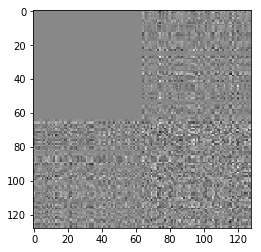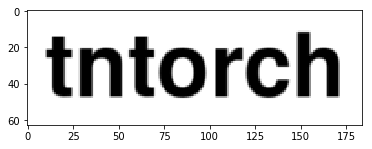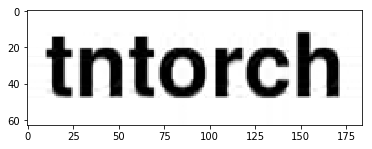Introduction¶
Welcome to tntorch! This notebook illustrates a few basic tensor manipulation and optimization use cases.
First Example¶
[1]:
import torch
import tntorch as tn
Let’s create a 2D random tensor of size \(128 \times 128\) and tensor train rank 10 (equivalent to a rank-10 matrix). The requires_grad flag tells PyTorch that this tensor should be optimizable:
[2]:
t = tn.randn(128, 128, ranks_tt=10, requires_grad=True)
t
[2]:
2D TT tensor:
128 128
| |
(0) (1)
/ \ / \
1 10 1
The spatial dimensions are shown above, the TT ranks are below, and the cores are listed as (0) and (1) in the middle.
In many ways, compressed tensors can be treated as if they were normal, uncompressed tensors:
[3]:
print(tn.mean(t))
print(tn.var(t))
print(tn.norm(t))
print(tn.norm(t+t))
print(tn.norm(2*t))
tensor(0.0153, grad_fn=<DivBackward1>)
tensor(10.3761, grad_fn=<DivBackward1>)
tensor(412.3184, grad_fn=<SqrtBackward>)
tensor(824.6368, grad_fn=<SqrtBackward>)
tensor(824.6368, grad_fn=<SqrtBackward>)
To decompress a tensor into a torch.Tensor, we can use the function torch():
[4]:
print(t.torch().shape)
torch.Size([128, 128])
The function numpy() returns the same, just as a NumPy tensor. Let’s use it to visualize the contents of our random tensor in matplotlib:
[5]:
%matplotlib inline
import matplotlib.pyplot as plt
plt.imshow(t.numpy(), cmap='gray')
plt.show()

To optimize tensors we can use tntorch’s helper function optimize().
Now, we will make our tensor zero over the top left quadrant by minimizing its norm:
[6]:
def loss(t):
return tn.norm(t[:64, :64])
tn.optimize(t, loss)
plt.imshow(t.numpy(), cmap='gray')
plt.show()
iter: 0 | loss: 216.324445 | total time: 0.0011
iter: 500 | loss: 93.631189 | total time: 0.4329
iter: 1000 | loss: 19.823667 | total time: 0.9703
iter: 1322 | loss: 0.082656 | total time: 1.2697 <- converged (tol=0.0001)

Second Example¶
Next, we will fit our tensor to be a rank-10 approximation of a grayscale image:
[7]:
im = torch.DoubleTensor(plt.imread('../../images/text.png'))
plt.imshow(im.numpy(), cmap='gray')
plt.show()
t = tn.rand(im.shape, ranks_tt=10, requires_grad=True)
def loss(t):
return tn.dist(t, im) # Equivalent to torch.norm(t.torch() - im)
tn.optimize(t, loss)
plt.imshow(t.numpy(), cmap='gray', vmin=im.min(), vmax=im.max())
plt.show()

iter: 0 | loss: 197.608333 | total time: 0.0005
iter: 500 | loss: 29.738809 | total time: 0.6222
iter: 1000 | loss: 21.908585 | total time: 1.2766
iter: 1500 | loss: 9.171426 | total time: 1.8568
iter: 2000 | loss: 4.394665 | total time: 2.4462
iter: 2500 | loss: 2.824173 | total time: 3.0283
iter: 2688 | loss: 2.709813 | total time: 3.2575 <- converged (tol=0.0001)

For other available tensor formats beyond plain TT, see this notebook.